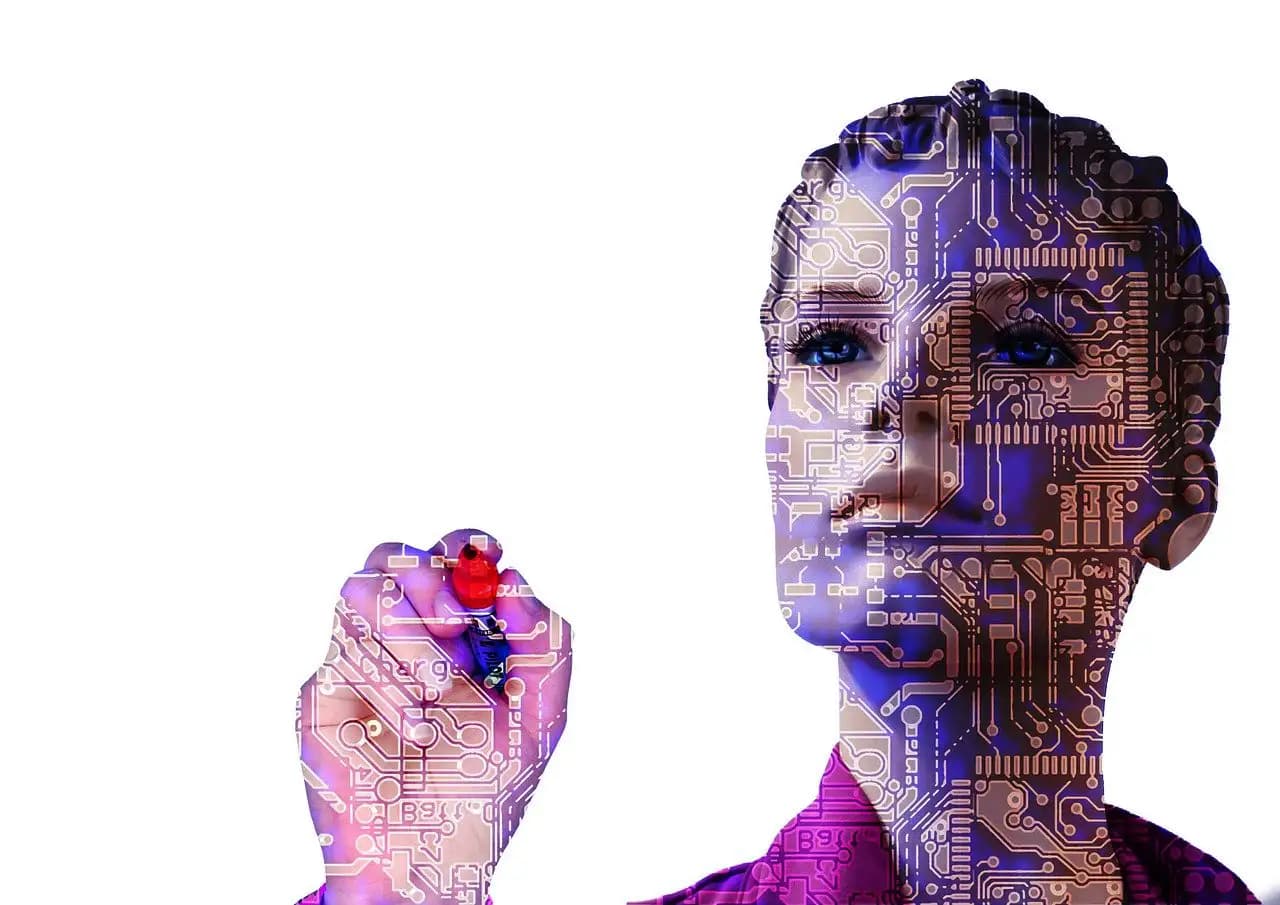Marketers today rely on visual media more than ever. They spend a considerable amount of time learning how to utilize visual media to reap the benefits of visual marketing. However, without machine learning, personalization and engagement often fall short.
They also have to set up a suitable ML solution to solve their marketing problems.
Data-driven automation can provide a regularly updated view of web users' current needs, analyzing their past actions to inform prospective customers' next steps.
Machine Learning Importance for Marketing
Today, ML and marketing are inseparable and help marketers understand data deeply and act accordingly.
The powerful marketing departments depend on KPIs and a complex set of analytics to monitor their progress toward customer growth goals.
As AI-driven models utilize predictive analytics, they suggest tailored offers to each customer. This individual approach increases loyalty and average time spent on site significantly.
The added advantage of machine learning is the clear targeting of the audience. Moreover, it is impossible to ignore A/B tests.
It is important to figure out which variations work well for a particular content.
What else can marketers expect from AI-driven models? Task automation, of course! In the 1990s, marketing automation platforms became familiar with significant CRM and email marketing programs changes.
The major functionalities of automating tedious and simple tasks were rapidly augmented with various complicated tasks led by data-driven automation.
ML can process a vast amount of collected audience data. The automation platforms started power-wise decision-making with customized audience development and automated lead scoring along the whole audience journey.
So, without the use of machine learning algorithms, it can be very hard to grow and stay ahead of competitors.
Ready to Witness the Use of Machine Learning Techniques within Your Organization? >>>> How it Works
Efficiency of Machine Learning in Visual Marketing
The past ten years have seen the rapid development of visual data such as videos and pictures. Marketing has implemented AI and ML very early to boost the customer experience.
Machine learning models can use NLP-processed text to inspect vast amounts of customer-generated data to find rules and patterns in social media posts, feeds, and interactions on customer support chats, blogs, and product websites.
Machines can generate reports on how users interact with a brand by deeply inspecting the keywords and sentiments in reviews, comments, and posts.
AI and ML technologies can offer a continuously updated view of web users' present demands and the actions they took a few months ago to inform marketers about what their prospective customers want to do.
Top Use Cases of Machine Learning in Visual Marketing and Advertising
Automatic Content Generation
For instance, GPT-3, OpenAI's language generator, can automatically produce shorter content pieces according to structured data, automating the creation of product descriptions, tweets, short news reports, and customer marketing emails in seconds.
Personalized Visuals
The growth of visual marketing purely depends on the personalization level, where machine learning algorithms use consumer browsing history, behavior data, and demographics to provide visually impressive content to consumers.
In visual marketing with data-driven automation, this translates into highly personalized visuals based on consumers' interests and preferences.
The goal of using ML and AI-based computer vision technology is to develop a model that can perform tasks independently without human support.
Computer vision technology is used, especially for deep learning, to inspect numerous datasets via annotated images displaying the objects of interest in the photos.
Improved advertising
Today, most advertising platforms have combined AI and ML technology to enable advertisers and marketers to target a larger audience with fewer efforts.
The use of automation in optimization can reduce major manual tasks when developing an advertising campaign and enhance performance concurrently.
Visual Search
An integration of machine learning and computer vision is used to work the visual search feature consistently.
In addition to letting devices look at the image, computer vision helps the system interpret what is in the image. Later, devices can determine how that information can be used.
In short, it depends on ML to find the object that is highlighted within the image.
The functionalities of visual search are different across big platforms. Users wish to use every platform with multiple mindsets, ranging from shopping to data recovery.
For instance, Bing and Google's visual search are mainly used for data; moreover, users can still employ this feature for shopping as well.
Predictive Analytics
Predictive analytics is another vital feature of AI-based models.
Predictive analytics goes through past data performance to determine the efficiency of multiple visuals.
Further, predictive analytics can be used to forecast churn, identify cross-selling or upselling opportunities, forecast CLV, identify relevant marketing messages and channels, and forecast client behavior triggered by specific events.
As companies generate a significant portion of revenue through repeat customers, identifying and addressing churn earlier is a primary revenue driver.
Businesses can use ML algorithms to identify customers likely to churn within a particular period and intervene with targeted offers, incentives, and messages to at-risk customers.
Marketing Opportunities
Basic and modern machine learning models provide limitless opportunities to strengthen visual marketing campaigns, save money and time, and make data-led decisions.
Most of the latest and freshest marketing opportunities can go unnoticed.
Time-management
Last but not least, a ML use case in visual marketing is if you're considering time management.
All of the cases mentioned above will help save a lot of time. Automating different tasks, such as content creation, video editing, or image tagging, will free up much free time.
The free time can be used to do crucial manual tasks that will improve your marketing efforts.
So, using ML-based algorithms, you can create highly effective visual strategies and images and tailor your approach to each website, app, or social media channel visitor.
Automated data visualization
Images are more powerful than words.
AI can convert data more proficiently into a visual format than humans.
Analysts normally rely on Tableau or Excel tools to manually produce visualizations. Still, automated corporate analytics solutions like Qlik can centralize data origins and produce useful reports and dashboards for your sales and marketing teams.
Various platforms use data analytics and modern machine learning algorithms to filter market trends, audiences' behavioral patterns, and other invisible data.
Talk to Express Analytics experts to explore AI-powered visual marketing solutions >>>> Visit here
The Future of Machine Learning in Visual Marketing
A lot of people are sure that artificial intelligence and machine learning are here to replace people.
The future of machine learning in visual marketing cannot be without human creativity.
The visual search technique is still being developed. Thorough research is needed to perform visual searches in different domains. The relevancy of these searches will depend on the design of the product structure.
With the creative features of ML algorithms, brands can predict how an end user feels about visual content.
Marketing professionals need to ensure that their visual elements are consistent with their brand messaging and reputation by perfectly pointing out scenes, emotions, and objects described in images and GIFs.
Conclusion
Machine learning in marketing allows businesses to stay active in the competition by considering market, customer, and product trends as they grow, addressing complicated problems before they materialize, and forecasting upcoming value with complicated analytics obtainable only through ML-based queries of massive volumes of data.
Visual marketing with machine learning allows customers to search for products they want to locate in the catalog with similar designs and styles. eCommerce brands use this solution to convert their lifestyle images into showrooms.
Ready to transform your visual marketing with machine learning?
Schedule a free consultation with our experts to discover how we can help you implement ML-driven visual marketing solutions for enhanced engagement, improved conversions, and competitive advantage.


